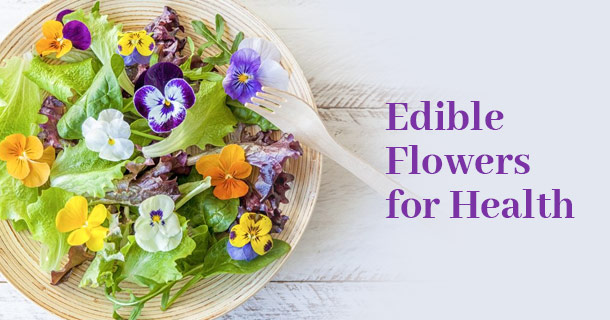There are countless fresh flowers that are edible, but they are not usually marketed as food. Growing flowers that can be consumed in a home garden is a great idea. Edible flowers include lotus, chrysanthemum, marigold, honeysuckle, nasturtium, cornflower, lavender, bee balm, and pink clover. Each of the edible flowers has its own typical growth requirements.
These edible flowers require good care and need extensive sunlight to produce vibrant blooms, well-drained mud, and a productive environment with regular watering. Edible flowers have been used in cooking for centuries and are becoming progressively widespread, particularly in haute cuisine.
They are eaten and used to add color, flavor, and texture to the food and salads; however, most commonly, they are known for their seeds – such as sunflower and pumpkin.

Edible flowers can be well-preserved for upcoming uses and also can be added in drinks, sweet dishes like desserts, jellies, jams, soups, fresh salads, syrups, and even garnishing. Vinegar and flower oils are made by marinating edible flower petals. Candid flowers are crystallized as preservatives using sugar and egg white.
Flowers, so vivid and lively, increase your feeling without even attempting. Edible flowers and plants bring that energy into the center of your being, particularly when they also have medicinal properties like the lovely nasturtium.
The top-secret of nasturtium is that both the flowers and leaves are edible. Their strong peppery tang adds a bite of interest to salads and can be a real blessing to a bored appetite when the shops only offer unappealing varieties of lettuce.
Edible flowers are great in nutritional value including minerals, vitamins, and micronutrients. With health being directly associated with whatever we put into our bodies, we can think about cooking with flowers to be healthy and stimulating cuisine.
Some of the edible flowers are listed below:
Pansy: It is one of the better-known varieties and is mainly used in cuisine. The entire flower petal is consumed including the sepals, which are used in pastries, appetizers, and cakes.
Lotus: Almost all the parts of the lotus can be consumed including its flowers, seeds, petals, flower stamens, and stems. It is helpful in reducing blood pressure and sugar and should be used with vigilance in patients taking medicines for the same. Lotus is an antioxidant (reduces the damaging free radicals in the body), hepatoprotective (protects the liver), cardiotonic, and can act as an astringent. It helps in reducing cholesterol and helps in the management of sunstroke, diarrhea, fever, urinary problems, insomnia, dysentery, cough, and cold.
Chrysanthemum: It comes in different colors such as white, red, orange, and yellow. These flower petals are utilized in oriental stir-fries and as salad seasoning, and the taste varies from being soft peppery to slight cauliflower.
Roses: Roses are utilized for their fragrance and are added to many types of drinks and dishes. Chinese Roses can improve blood circulation, aid in controlling menstrual cycles assists in digestion by supporting bile secretion and nurturing the intestines.
Lavender: The lavender makes a fabulous garnish for champagne and cakes, and also enhances a sweet floral aroma to sauces.
Dandelion: It is used by the Europeans for the cure of diarrhea, fevers, liver problems, eye diseases, acidity, boils, and skin diseases. Dandelion is rich in vitamins such as A, B complex, C, and D and minerals such as calcium, potassium, iron, and zinc. The dandelion flowers are used to make honey syrups, wine, and jams, while its roots and leaves serve as a “blood purifier” and diuretic.
Marigold: It tastes from zesty to bitter and piquant to peppery. The petals of Marigold are sprinkled on pasta, soups, salads, and rice dishes.
Bee Balm: This has a minty tang and hot flavor which is used in several culinary dishes.
Peony Flower: peony has a bitter taste that nourishes the liver and blood and also Yin energy. It is often used to treat bad temper, depression, irregular menstrual periods, and diarrhea. Peony flower also provides relief from acne and improves complexion.
Although there are several flowers that can be utilized for their flavors and medicinal properties when added to food, there are also poisonous flowers, so an understanding should be there prior to when one starts to cook with edible flowers.

 October 11th, 2021
October 11th, 2021 Posted in
Posted in  Tags:
Tags: